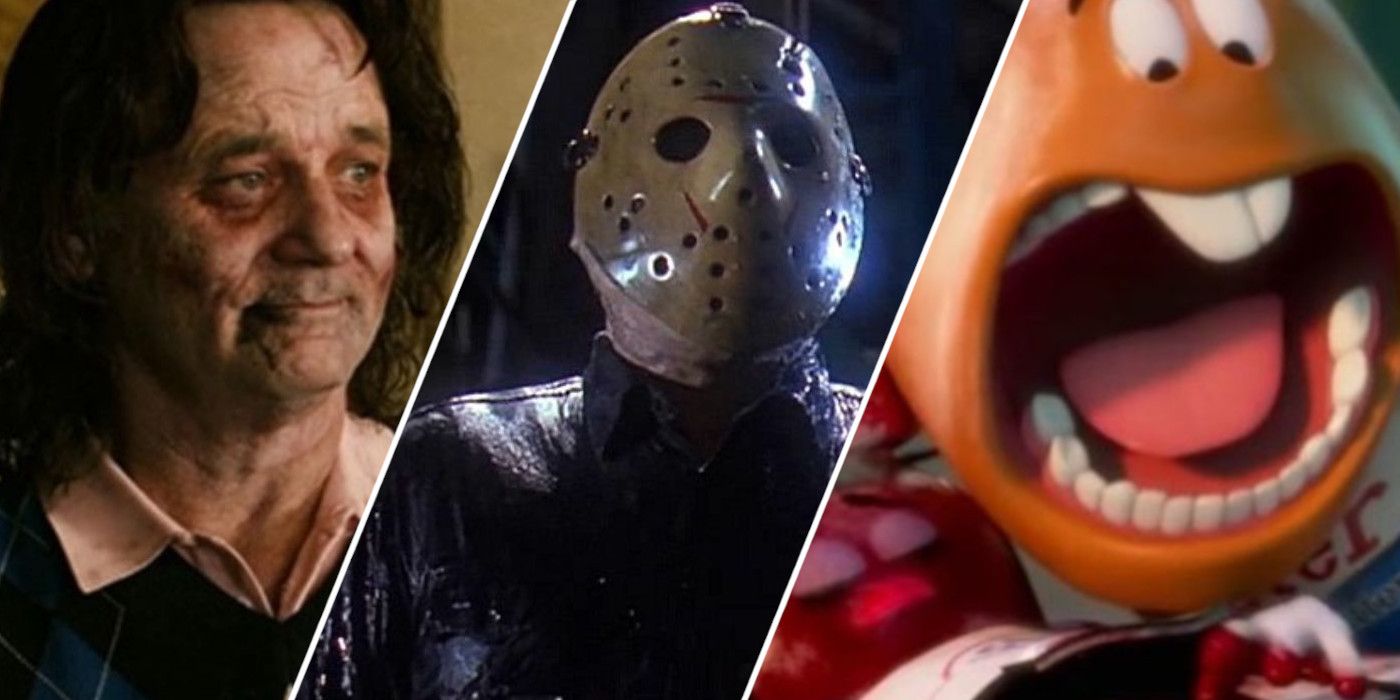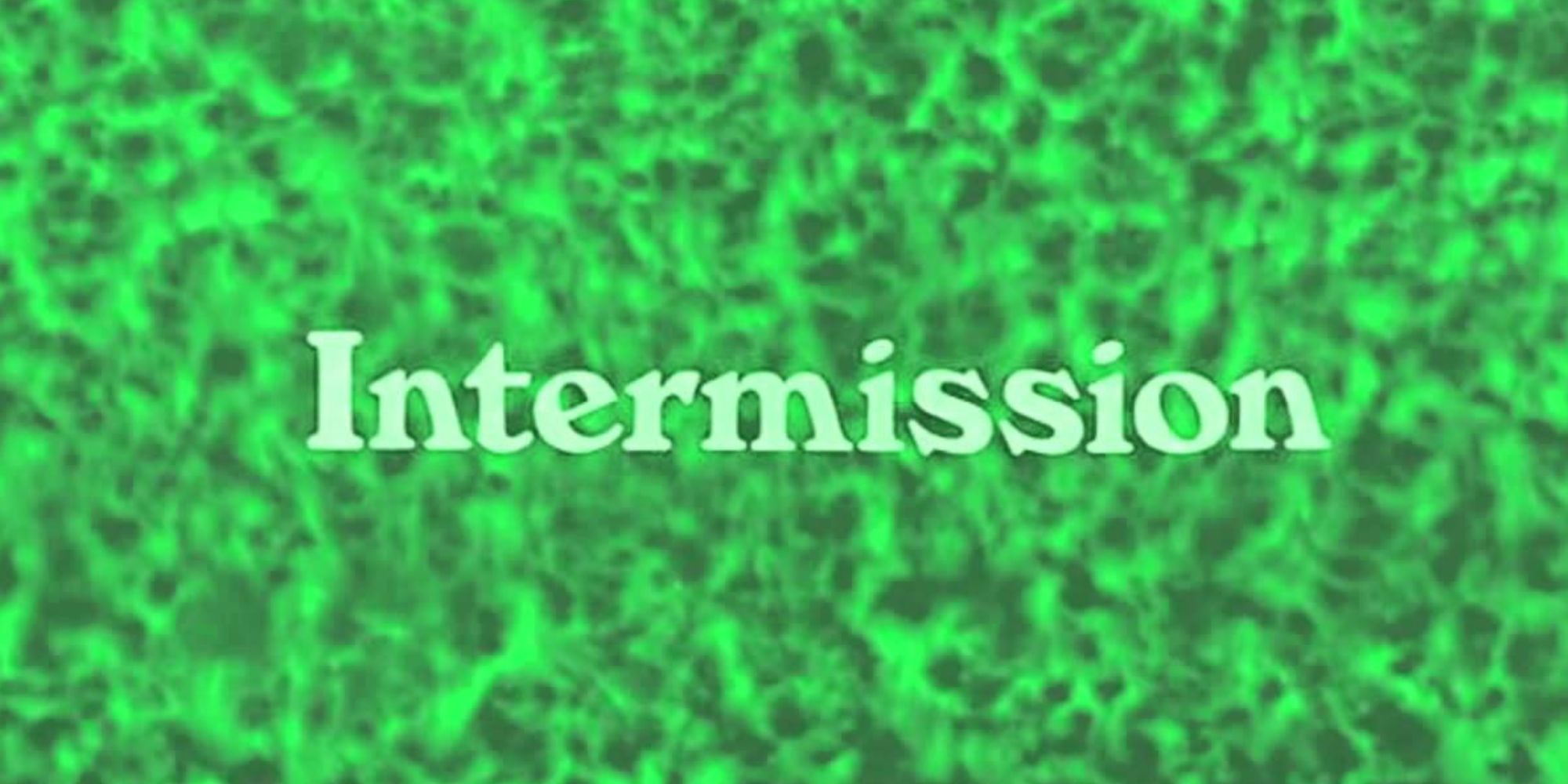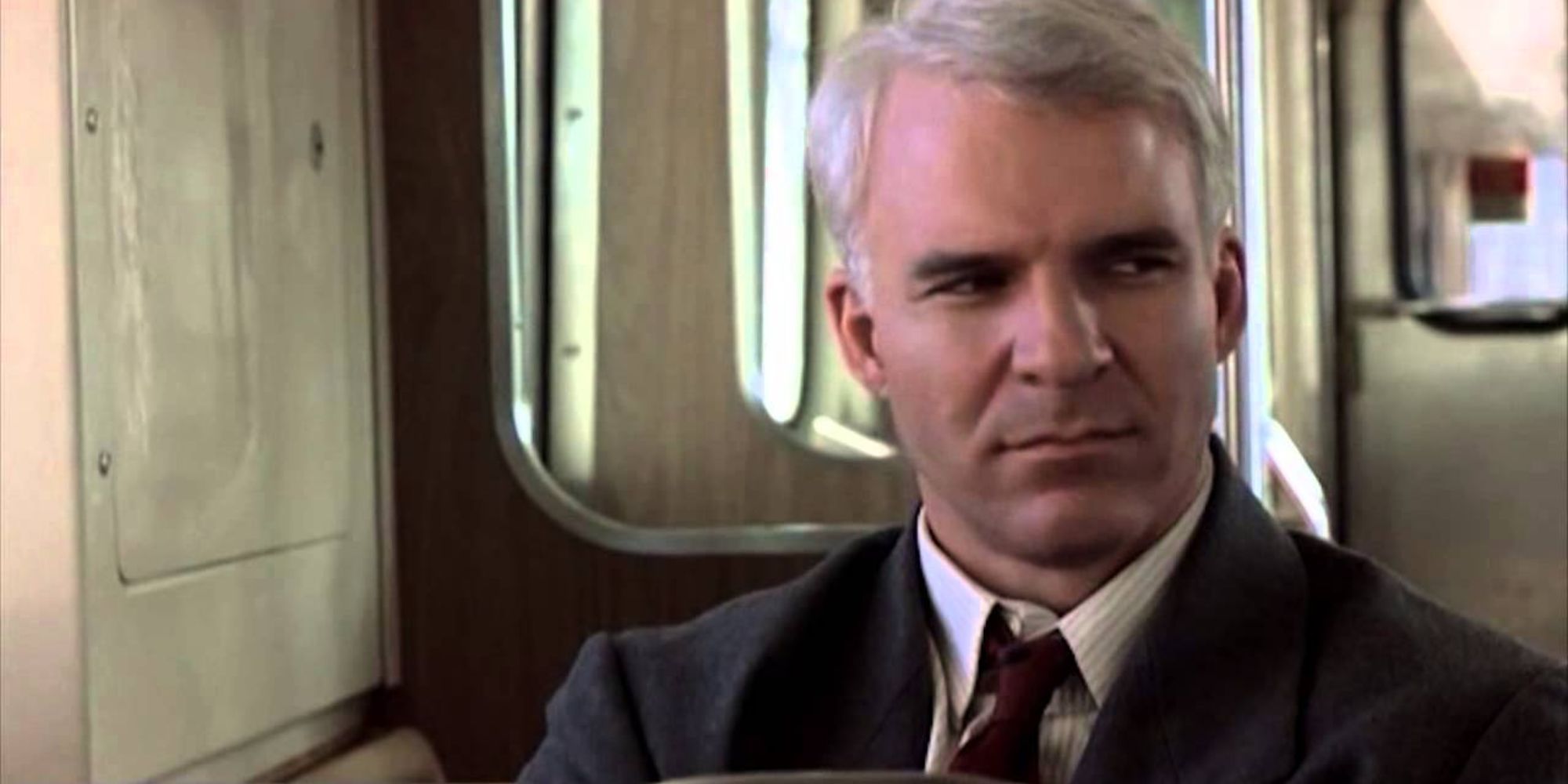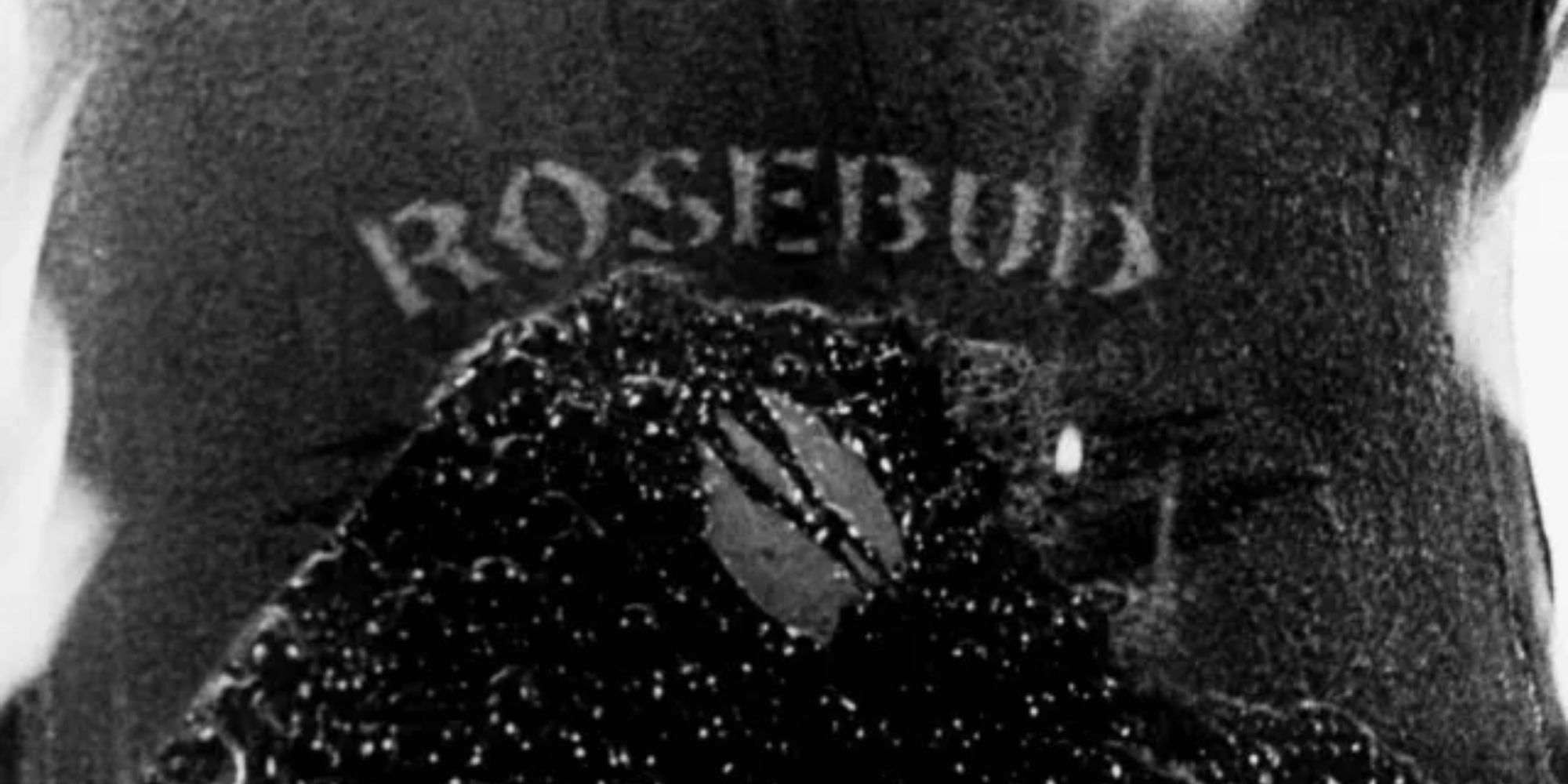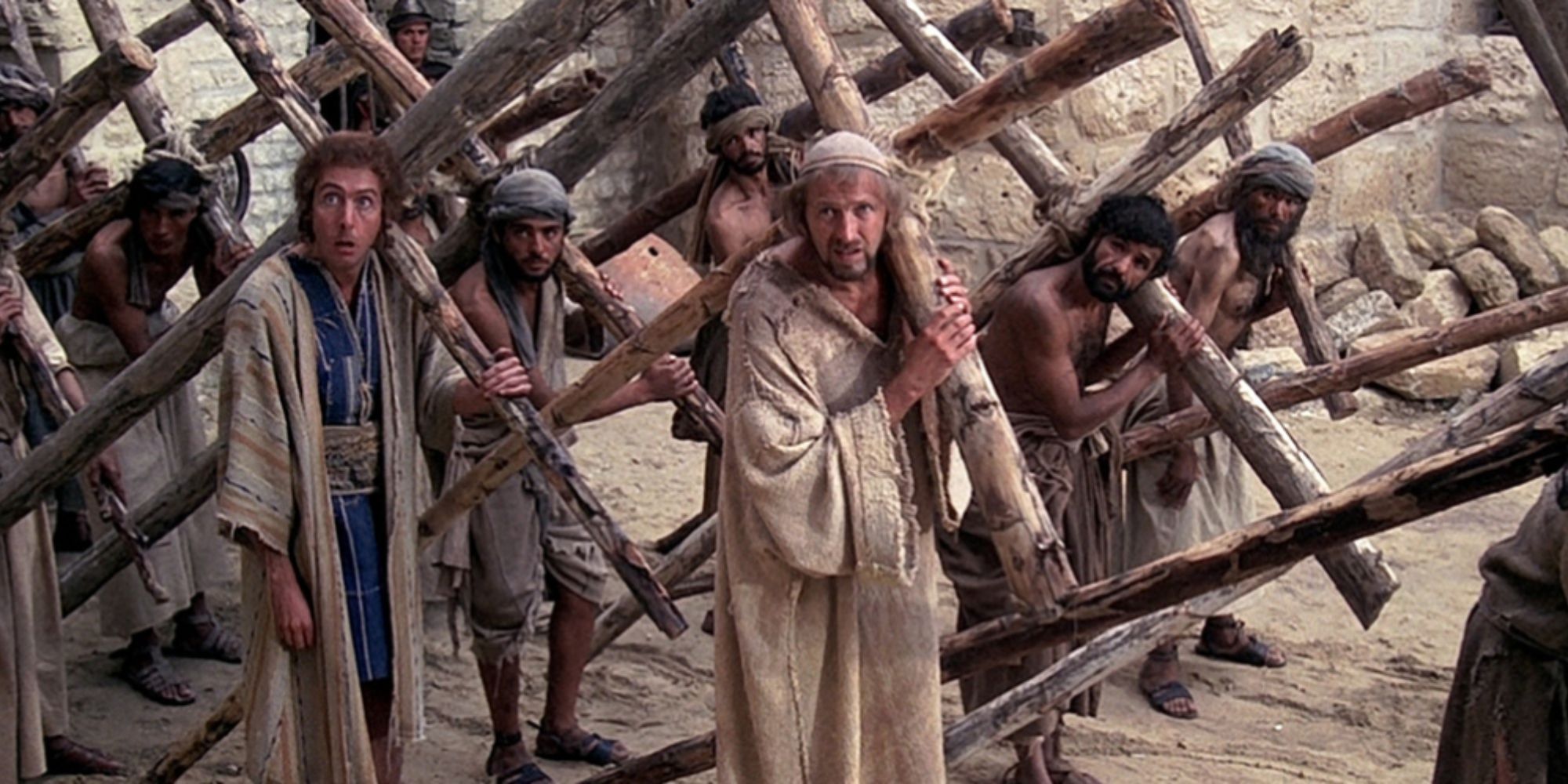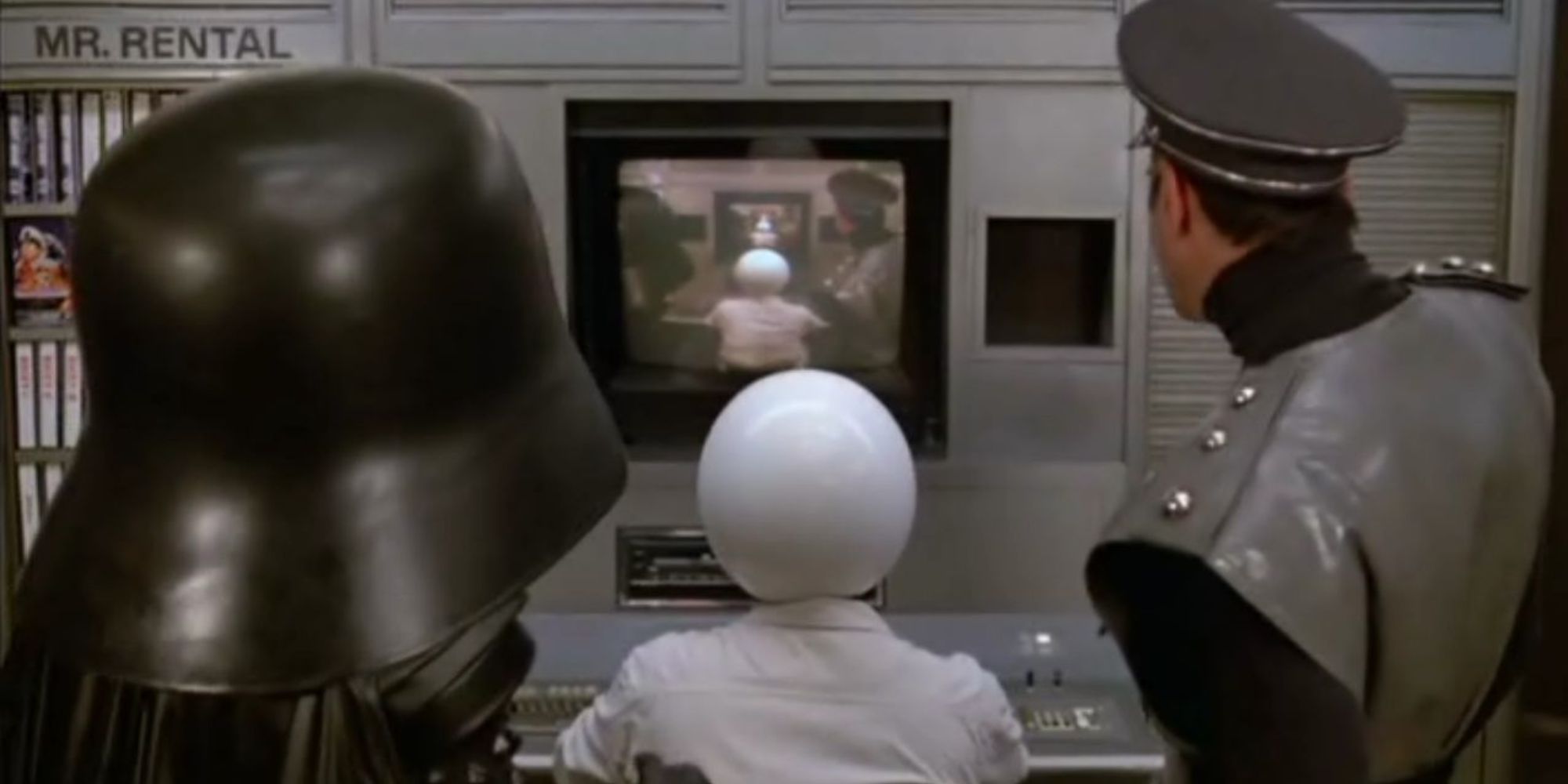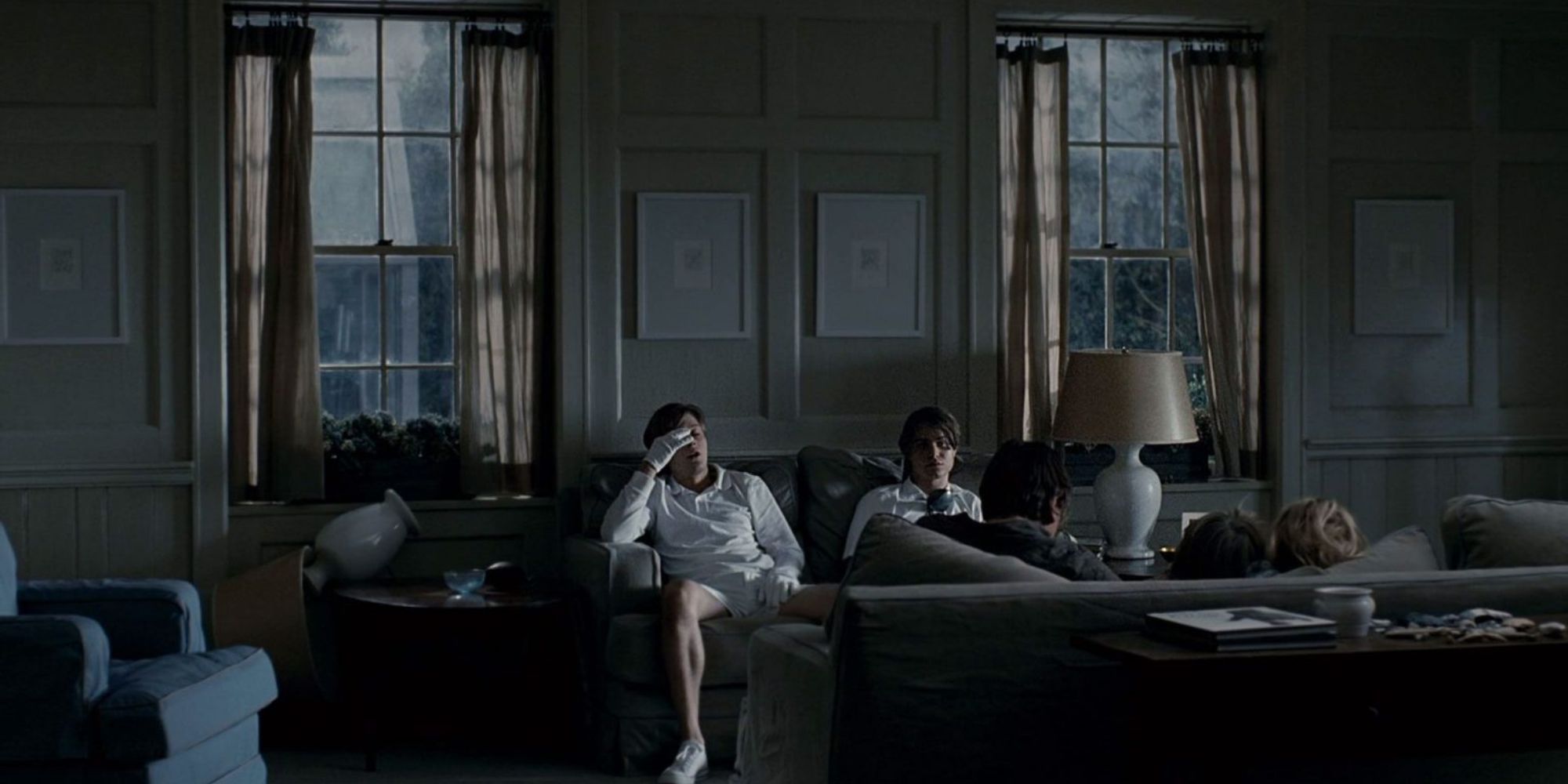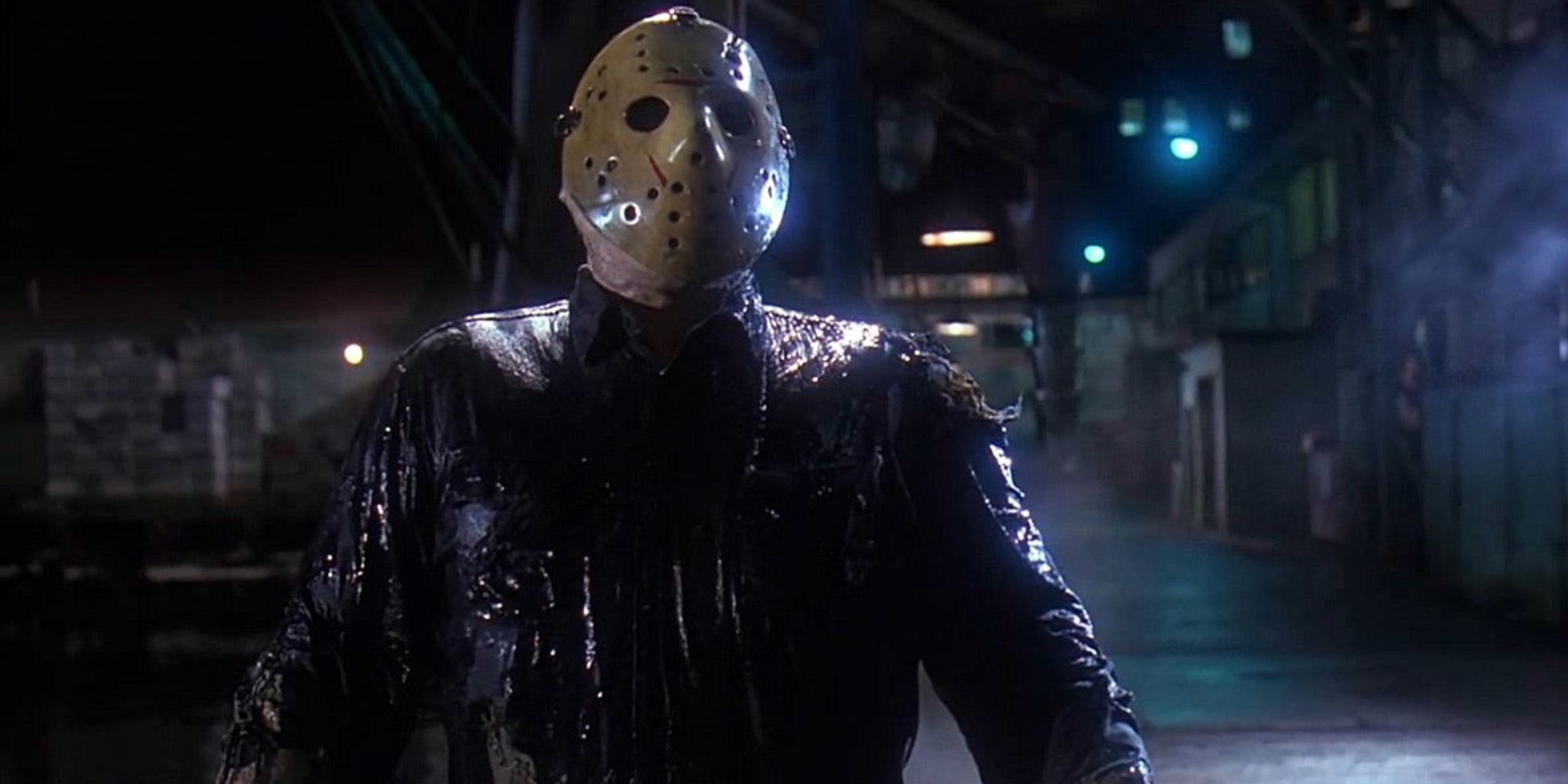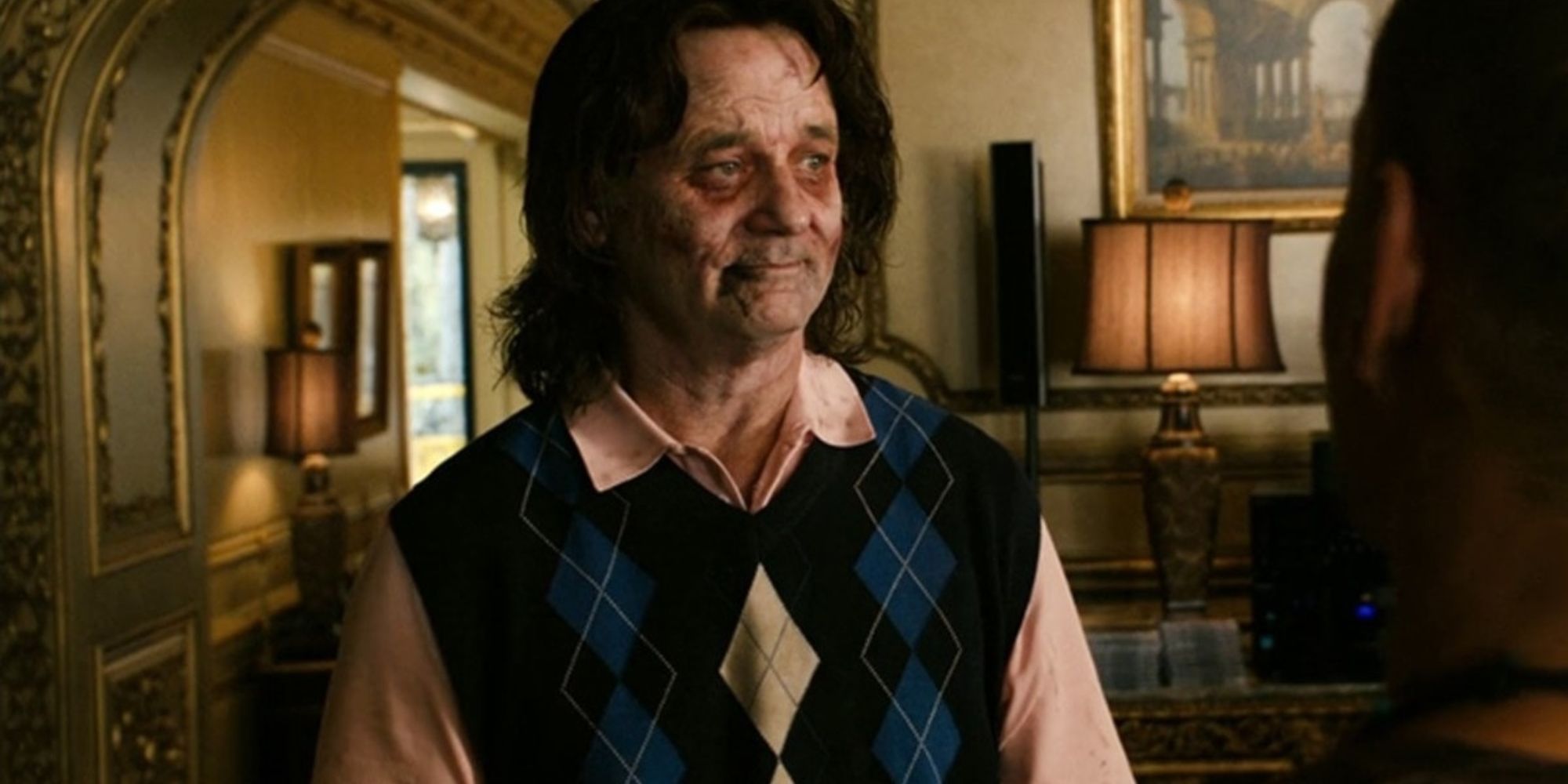Comedy movies are meant to be laughed at. But it seems that the laughs are typically one-sided, as it's always the audience laughing at the writing, acting, or filmmaking choices. Sometimes, it's only fair that the filmmakers get in on some of the laughs, too.
Some filmmakers do this by playing practical jokers on their audience, which may leave the viewers disgruntled, even though the people behind the camera find it hilarious. Whether the movies are technically listed as comedies, there are still plenty of films in which the filmmakers decide to make the audience the butt of a joke.
The following entries contain spoilers for the films discussed.
Intermission — 'Monty Python and the Holy Grail' (1975)
Monty Python's Flying Circus loves playing practical jokes on their audience, and this joke that occurs right near the movie's end might be the greatest one they've ever pulled. Sadly, it only worked when the film was first released in theatres.
Towards the film's end, the screen abruptly switches to organ music with a screen that reads "Intermission." Intermissions have been used in movies, so this wasn't uncommon. The screen appears for just long enough that many would have walked out of the theater before the screen switches back to the action. At this point, there are only about five or ten minutes left in the movie. Think about it: anyone who fell for the phony intermission screen would have grabbed some extra popcorn or gone to the bathroom, only to come back and find that the movie was over. Priceless.
The F-Word — 'Planes, Trains, and Automobiles' (1987)
It's a known fact that movie ratings are often based on profanity. In particular, the use of the f-word. By most rating guidelines, one f-bomb is allowed in a PG-13 movie. Any more would bump the rating up to an R.
Planes, Trains, and Automobiles is pretty light on profanity and doesn't overstep its boundaries. Until one specific scene, that is. When Neal (Steve Martin) finds that the rental car he ordered for pickup is nowhere to be found, he treks down to the rental agency, where he lets loose a firestorm of f-bombs right in a row. This is the only time the word is used in the movie. This led the movie to be rated R, even though they could have easily squeaked by with a PG-13 rating had they cleaned the script up a bit. It's more than likely this was an intentional prank: best known for his teen comedies, Hughes made it so that his youngest fans had to sneak in or be accompanied by an adult.
Rosebud — 'Citizen Kane' (1941)
Citizen Kane is one of the most famous movies of all time, and it is considered by many to be a masterpiece of cinema. Kane's (Orson Welles) last words are the film's most famous: "Rosebud." He then passes.
With much of Kane's life being a mystery, it usually leads viewers to speculate on who or what "Rosebud" is. Even the film's characters speculate, and many are greatly intrigued by the enigmatic "Rosebud." As it turns out, the movie's end reveals that "Rosebud" is nothing more than a toy sled Kane had as a child: it calls back to the last time Kane was truly happy. While not a big "joke," there is some dark irony that everyone in the film (and audiences) was scrambling to figure out what his last words meant when their origins were far more mundane.
The Bright Side of Life — 'Monty Python's Life of Brian' (1979)
This is another classic Monty Python film that also plays a practical joke on its viewers. This one comes toward the end, as well. In the end, Brian (Graham Chapman) is crucified by the Romans, and as he hangs on the cross, waiting for death to come, he finds himself looking around for a last, desperate way out.
Several deus ex machinas show up but fail to save the beleaguered messiah. Brian is visited by his mother, who shows up only to scold him, and doesn't set him free. He also witnesses the Romans getting attacked by a foreign nation's army. They don't set him free, either. About four or five times, the gents at Monty Python's Flying Circus give the audience hope for Brian and let them think that maybe, just maybe, he might make it. All those hopes are quickly squashed when no one rescues him in the end, after all.
We're In Now, Now — 'Spaceballs' (1987)
Movies breaking the fourth wall is nothing new. Take classic movies such as Fight Club (1999), Ferris Bueller's Day Off (1986), and Deadpool (2016), for example. But Mel Brooks' sci-fi parody film Spaceballs does it in a way like no other.
The film references the fact that the characters know they are in a movie, and it becomes a running gag after a while. But in the middle of the film, the antagonists get an idea to watch the movie to figure out how they will stop the heroes. They find a VHS tape of the movie before it's even been released, and watching it; they arrive at the precise moment the camera is filming, creating the Droste effect: the phenomenon when an image recursively appears in itself. The conversation that ensues is hilarious but super confusing, and it's obvious that Mel Brooks is just trying to weird his audience out.
Rewind — 'Funny Games' (1997/2007)
Michael Haneke's Funny Games is a mind-bending psychological thriller film that mediates on the consumption of violent media. The movie's entire premise is that the viewer of a film is utterly powerless to control the film itself and the sadistic violence therein, and the movie loves to drive this point home.
Towards the end of the 1997 original film and its 2007 shot-for-shot remake, the film rewinds itself after a certain character dies, effectively undoing their death. It isn't clear if you're not expecting it, but that's the point.
The Whole Movie — 'Sucker Punch' (2011)
Zack Snyder is a film director known for creating the DC Extended Universe movies and being relatively inconsistent with his work. His 2011 action flick Sucker Punch was poorly received by critics and fans. Some of that backlash may have been because some people felt called out.
The women in the movie are sexualized, while the men are portrayed as lazy, manipulative slobs obsessed with sex. Snyder may be holding up a mirror to the people in the audience who behave like the men in the movie and view women the same way the movie portrays them. It's almost as if Snyder is trying to say that if one were to feel called out by the movie, that's probably because they're exactly the type of person he's making fun of.
The Setting — 'Friday the 13th Part VIII: Jason Takes Manhattan' (1989)
This installment of the well-renowned slasher franchise Friday the 13th did an excellent job of fooling its audience. Promotional images showed New York; the trailer showed exclusively scenes from New York, and the title screams New York. Where does the film take place, you ask? Not New York.
In fact, almost the entire movie takes place on a boat. Even though it is en route to The Big Apple, the city isn't seen until the very end. This is more than just a dishonest trailer. The filmmakers played a joke, and horror fans fell for it.
Bill Murray — 'Zombieland' (2009)
Zombieland takes place during a zombie apocalypse, like many late 2000s films. The twist is that this one is more of a comedy. So when the main characters bump into Hollywood actor Bill Murray of all people, naturally, the audience is left excited. Bill Murray is a notoriously funny actor who always lightens up the films he's in.
The film makes it seem like Murray will join the group of survivors and that he'll be a great addition to the movie. Unfortunately, he thinks it would be a great idea (since he is dressed as a zombie) to scare one of the characters, who promptly shoots him dead. Murray lasts for a grand total of five minutes on screen. It isn't very pleasant for the audience but funny for the creative team behind the movie.
The Premise — 'Sausage Party' (2016)
Sausage Party is an adult comedy movie with no shortage of ridiculous scenes, but that's sort of the point. If you're not familiar with it, it's a bunch of animated grocery store products that are sentient, similar to Toy Story, only R-rated.
Throughout the film, the movie makes several subtle efforts to express its disbelief that viewers bought into such a ridiculous premise. Ouch.

